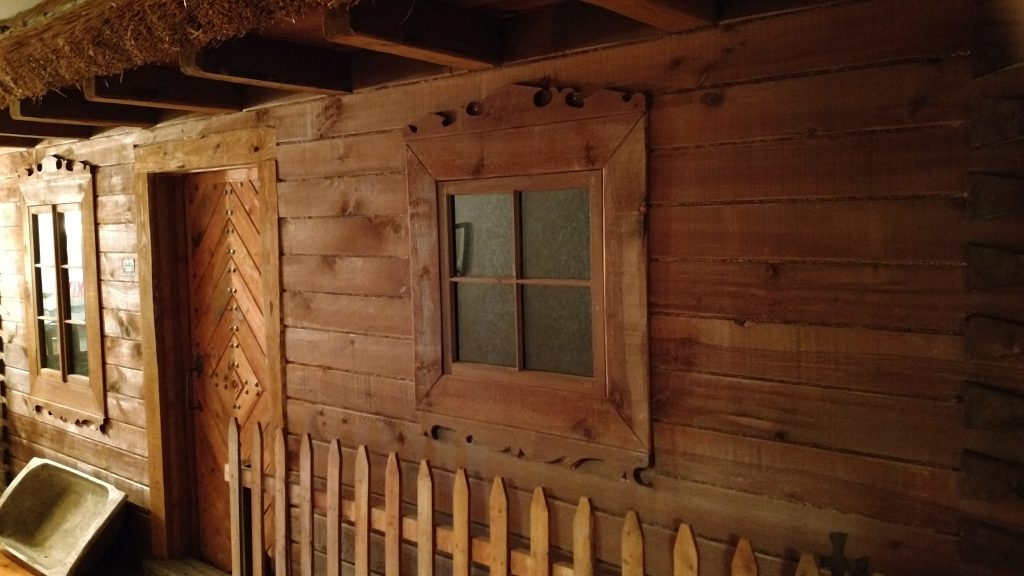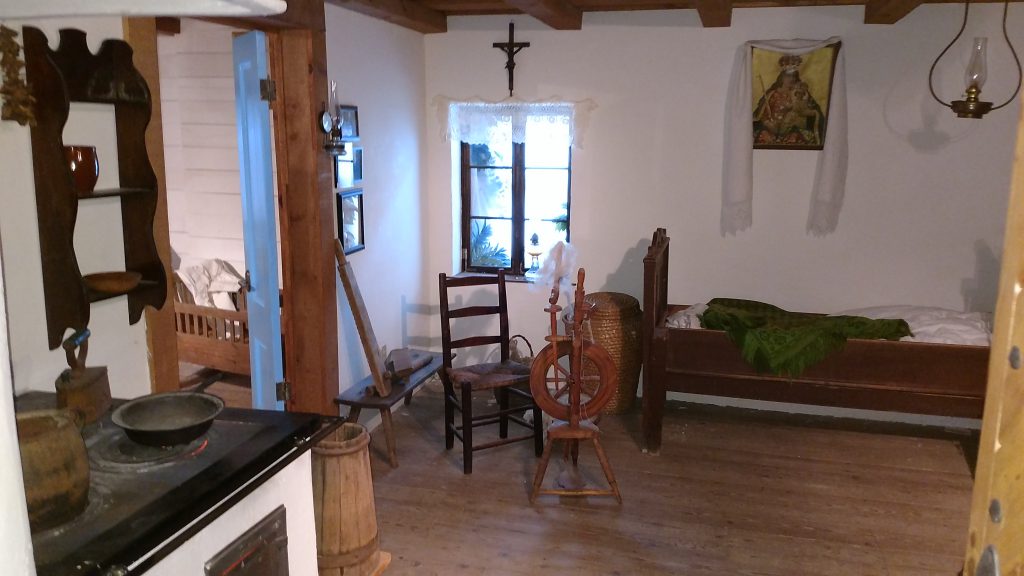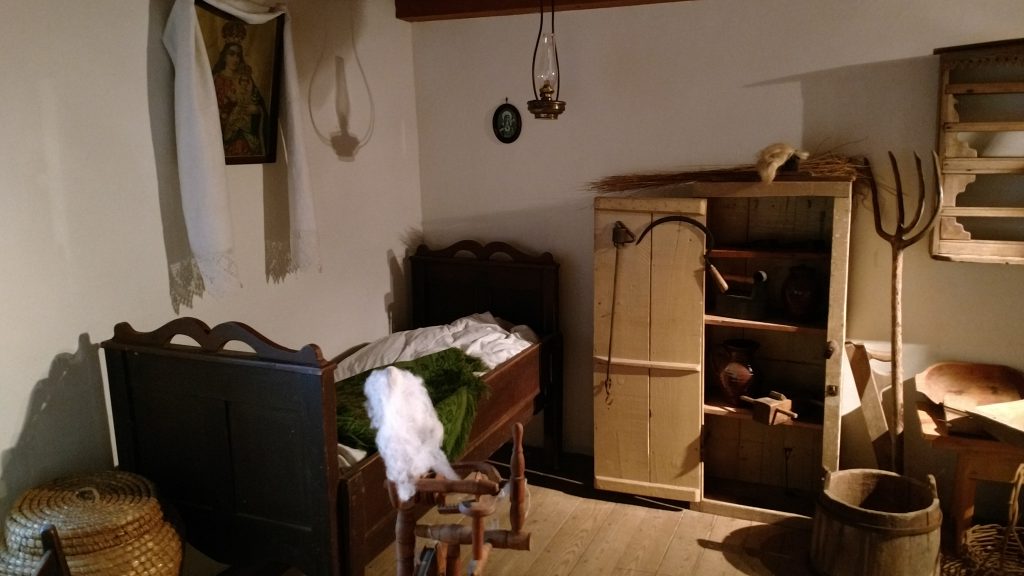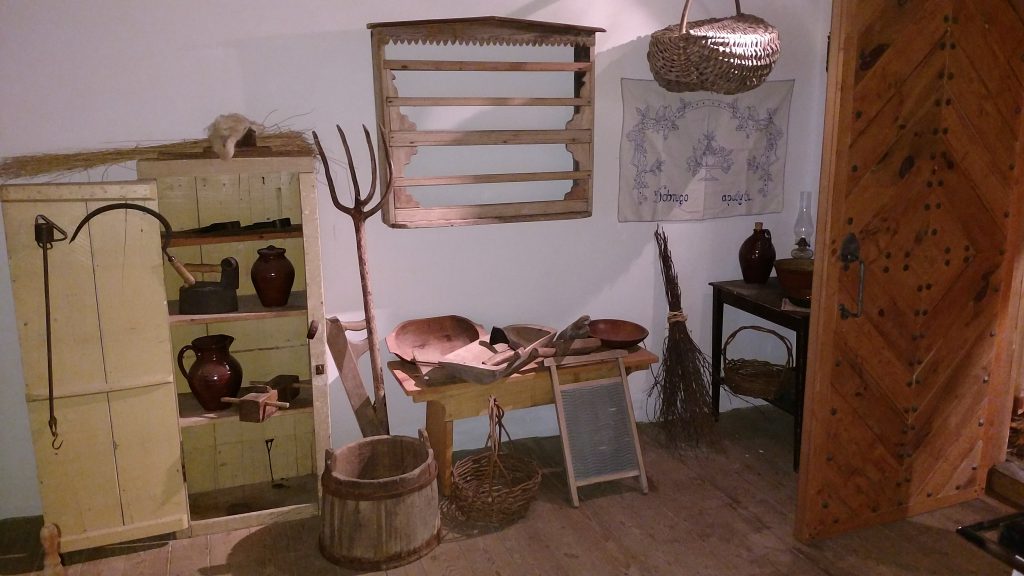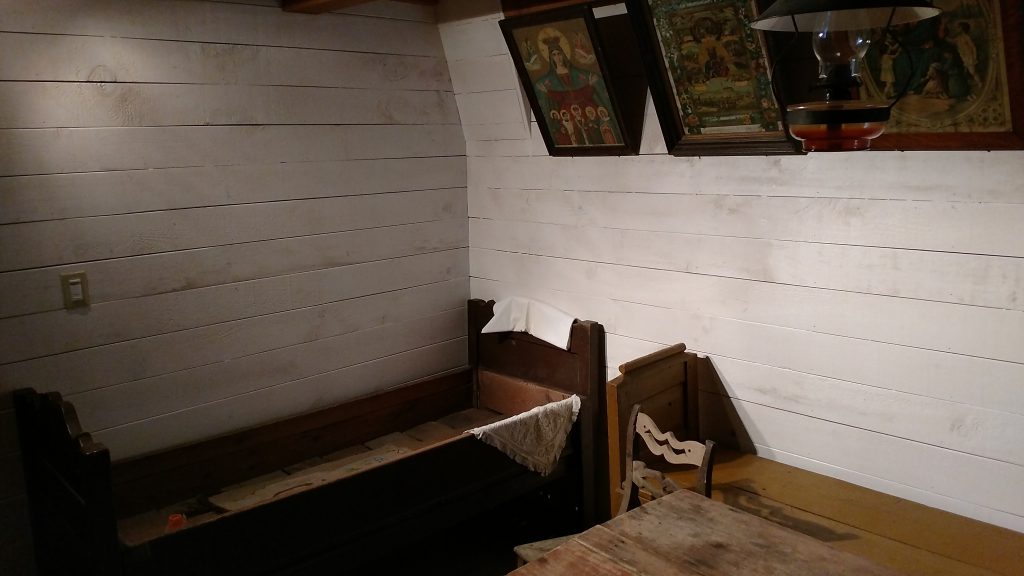A reproduction of a Polish country cottage is found on the third floor. Its architecture is not representative of any particular regional style. However, most artifacts were acquired from the vicinity of Białystok in north eastern Poland. Stanisław Radosz, founder and executive director, conceived the concept of the Polish cottage in 2010.
An ambitious project such as this obliges us to provide a story to go with it. We imagine that our cottage was first erected in the early 1860s. We see three generations complete their lives’ journey within the walls of this two-room home—making changes to the cottage throughout the years, until the last generation leaves for America in 1921. The inhabitants of the cottage lived in more favorable conditions than most country folk. They were, overall, self-reliant, producing much of the food and goods they needed for their family of perhaps seven individuals.
Our reproduction of a Polish cottage is intended to introduce visitors of all ages to country life in Poland as it once was. We hope that for many the experience will be both educational as well as spiritual.
This project was accomplished with the talent, guidance and commitment of many. The Polish Center wishes to acknowledge the following volunteers who played an instrumental role in bringing the project to completion:
• Dr. Zdzisław Głębocki (University of Białystok)
• Wacław Szymczakiewicz (Member of the PCDL board)
• Joan Lupa and son Wally Lupa (NL Construction)
• Henry Dziok and son Tom Dziok
• Kasmer Kielb (Advance Welding)
• Nancy and Edward Dzielinski (Member of the PCDL board)
• Stanisław Zachara
• David Fortier (Fortier Painting, Inc.)
• Greg Bernat (Member of the PCDL board /Bernat’s Polish Deli)
• John Kozikowski (Bron Classic Firearms)
• Jim Kules and Eric Basile

